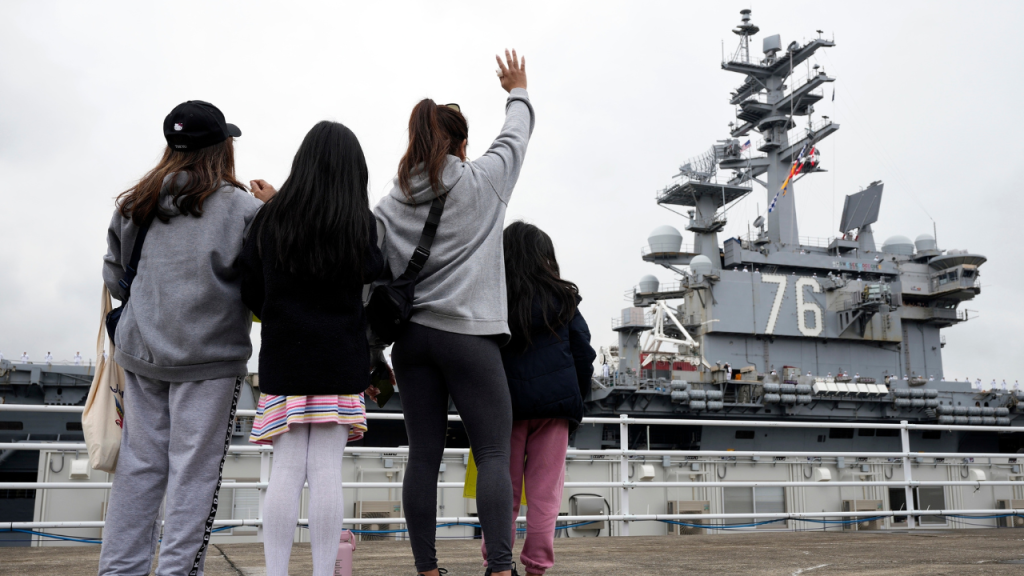The USS Ronald Reagan, a Nimitz-class aircraft carrier, has departed its home port in Japan after almost a decade. The carrier played a significant role in bolstering defense ties in the Indo-Pacific region, particularly with Japan. After its final patrol, family and friends bid farewell to the ship at Yokosuka Naval Base. The departure of the USS Ronald Reagan comes at a time of growing tensions, as China becomes increasingly assertive in the Indo-Pacific. It will be replaced by another Nimitz-class carrier, the USS George Washington, later this year as Japan accelerates the buildup of its military capability and increases joint naval operations with the United States.
The USS Ronald Reagan first arrived in Yokosuka in 2015 and has since participated in numerous multilateral exercises and visited over a dozen foreign ports, including a historic port call to Da Nang, Vietnam, last year. During its deployment near the Korean Peninsula, the carrier contributed to Operation Tomodachi following the 2011 earthquake, tsunami, and nuclear disaster in northeastern Japan. It served as the flagship of Carrier Strike Group 5 under the U.S. Navy’s 7th Fleet, marking the first time an American aircraft carrier was deployed as such from a home port outside the U.S.
As tensions continue to escalate in the South China Sea and the East China Sea, Japan remains concerned about its territorial disputes with China over uninhabited islands. Japanese and Chinese coast guard ships frequently face off in the waters of the East China Sea. Former Japanese Defense Minister Tomomi Inada emphasized the importance of cooperation with the U.S. and other like-minded countries to defend the international order. Inada recently joined an environmental survey trip near the disputed Senkaku islands and called for experts to be able to land on Japan’s territory for research, sparking a protest from China.
At the farewell ceremony for the USS Ronald Reagan, U.S. Ambassador to Japan Rahm Emanuel praised the crew for ensuring that millions of people across the Indo-Pacific could live free of coercion, aggression, and suppression. Hundreds of sailors stood along the rails of the carrier as it departed from Yokosuka Naval Base, forming the Japanese saying “dewa mata,” or “see you.” The carrier was accompanied by two guided-missile destroyers, USS Robert Smalls and USS Howard, marking the conclusion of almost nine years of deployment in the Indo-Pacific region.
Even as the Navy faces recruiting challenges amid worldwide threats from China and Russia, the departure of the USS Ronald Reagan signifies a seamless transition as the USS George Washington prepares to take its place later this year. The Navy lowered enlistment standards to address ongoing recruiting woes. The USS Ronald Reagan’s departure underscores the enduring defense partnership between the U.S. and Japan in the Indo-Pacific region. The carrier’s presence has been instrumental in strengthening security alliances and maintaining stability in the face of growing regional tensions.













